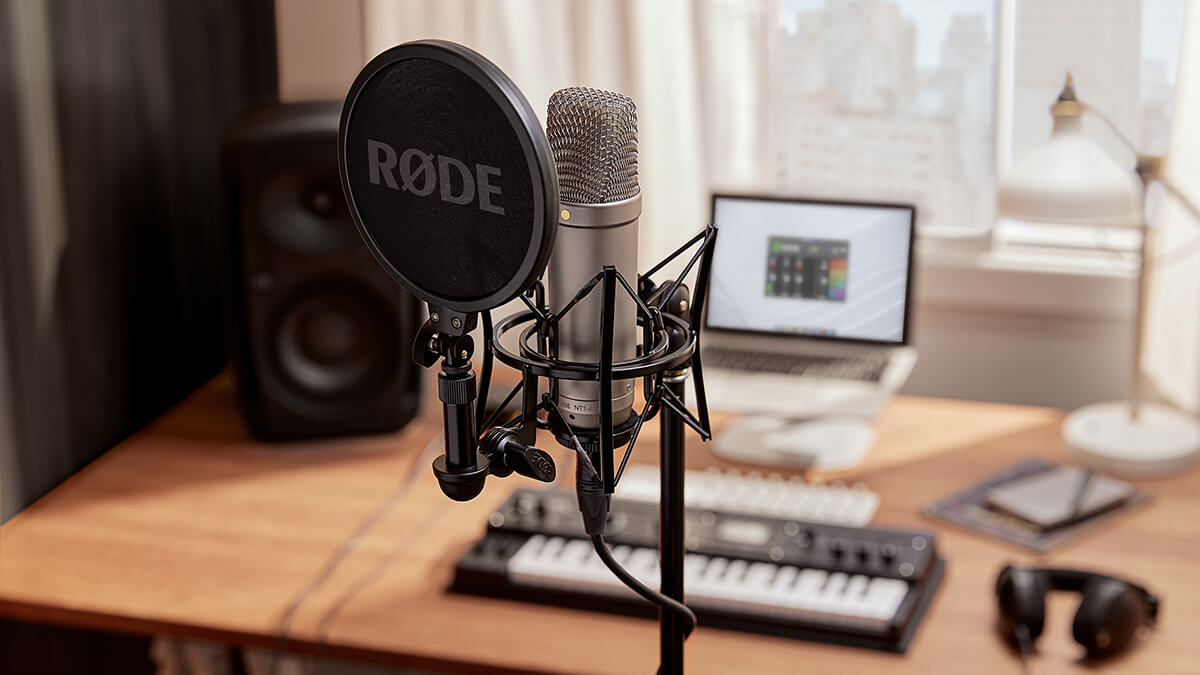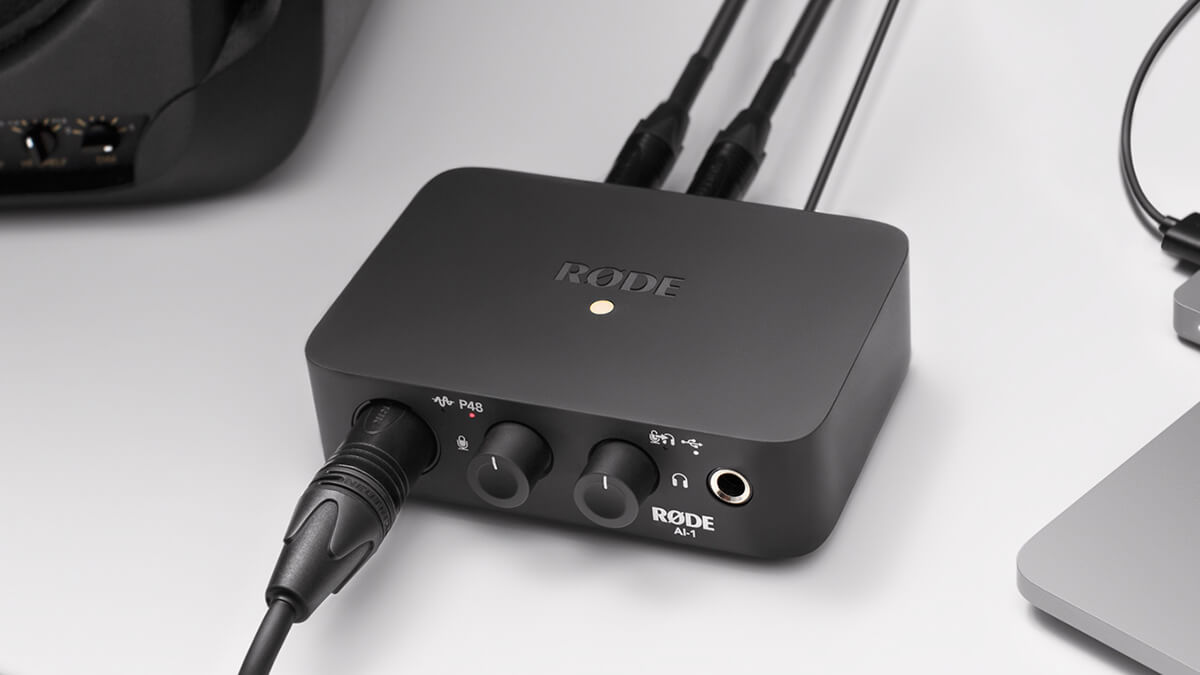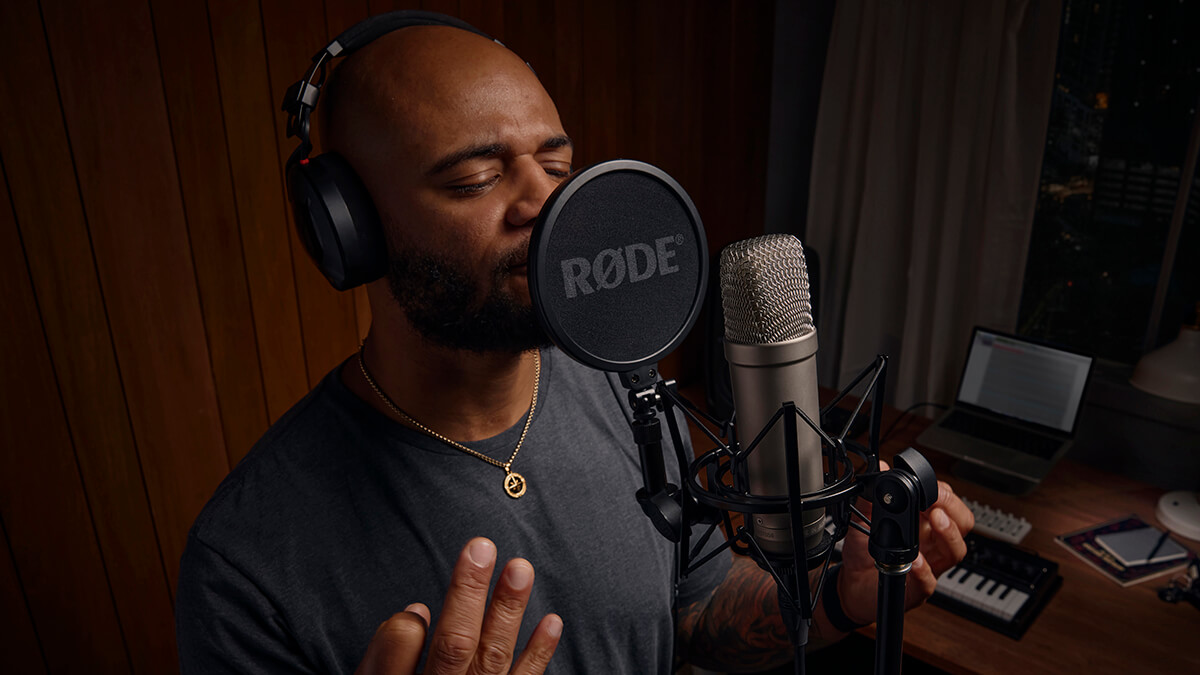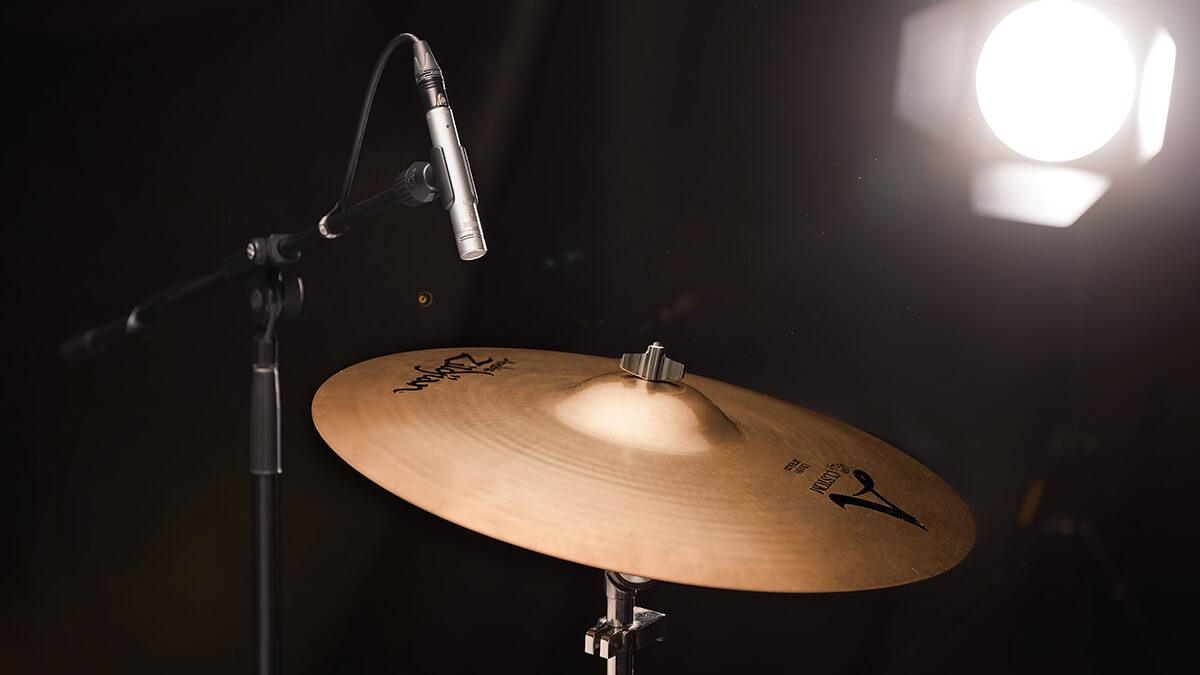The Difference Between Large-Diaphragm and Small-Diaphragm Condenser Microphones
Posted by Rode Microphones on 22nd Aug 2022
Condenser microphones are incredibly versatile. Whether you’re recording pianos or podcasts, acoustic guitar or ASMR, a condenser will perform brilliantly. While there are a few different types and designs within the category, one of the key points of differentiation is the size of the mic’s diaphragm, with small and large being the most common distinctions. But what’s the difference between a large-diaphragm and small-diaphragm condenser microphone and when should you use one over the other?

Large-diaphragm condenser microphones like the NT1-A are hugely versatile and excel at recording everything from vocals and guitars to piano and drums.
In this article, we’ll cover how condenser mics function more broadly before diving into the difference between large-diaphragm and small-diaphragm varieties and, most importantly, look at which recording applications are best suited to each type.
How do Condenser Microphones Work?
As with all microphone designs, condenser mics contain a sensitive and conductive material known as a diaphragm, which vibrates when sound waves hit it. The diaphragm in a condenser microphone (whether it’s large or small) is an extremely thin membrane that sits parallel to a solid metal plate, both housed inside the mic’s capsule. As sound waves hit the membrane, it vibrates and induces a current in the charged metal plate, creating an audio signal.
As the signal produced isn’t strong enough to be output as is, condenser microphones feature an on-board preamplifier that boosts it to reach appropriate levels for further processing and recording. This preamp needs power to operate, as does the charged plate in some designs, so most condenser mics require what’s known as ‘phantom power’, which is delivered via an XLR cable from an audio interface or mixer.

The AI-1 audio interface provides 48V phantom power via its XLR input for use with condenser microphones.
In the case of tube condenser mics, a separate external power supply is required for operation, while other condensers can get their power from batteries or sources like a camera. However, most ‘studio’ condenser microphones just require phantom power, so make sure your audio interface or mixer can supply it if you are using one.
Check out this article for more information on what a condenser microphone is and when to use one.
What is a Large-Diaphragm Condenser Microphone and When to Use One?
As their name suggests, large-diaphragm condenser microphones such as the RØDE NT1-A have a larger membrane in their capsule. There isn’t a written standard when it comes to just how big this diaphragm needs to be to qualify as ‘large’, but a diameter of 1 inch or greater (25.4mm) is the rule of thumb.
Lower Self-Noise
When it comes to technical performance, one of the main advantages of these mics is that their larger diaphragms generate a higher signal voltage, and in turn, they tend to produce less self-noise (i.e., noise that comes from the microphone itself, rather than what it records).
‘Big’, ‘Lush’ and ‘Warm’ Character
With that said, lower self-noise likely won’t be the driving factor when choosing one over the other, but rather their character and sonic performance.
Large-diaphragm condenser mics tend to sound, for lack of a better word, ‘bigger’ than their small-diaphragm counterparts, and offer a more characterful and colourful quality. The pickup pattern of large-diaphragm condenser mics is less consistent than small-diaphragm counterparts, and their frequency response is generally less neutral. Both of these factors help to impart a ‘lush’ and ‘warm’ character to the recorded material, a trait that is especially desirable on vocals but can help add colour and fullness to a huge variety of instruments and other sound sources.
Marrying this character with the wider frequency response and superior precision that all condenser microphones exhibit makes for a potent combination, and large-diaphragm condensers are incredibly versatile beasts as a result.

The RØDE NT1-A large-diaphragm condenser microphone excels at recording vocals thanks to its stunning warmth and clarity.
What is a Small-Diaphragm Condenser Microphone and When to Use One?
Small-diaphragm condenser microphones like the RØDE NT5 are defined by their (you guessed it) smaller diaphragm. Just like with their larger counterparts, there isn’t a hard-and-fast rule for what qualifies as ‘small', but it’s generally accepted that it refers to anything with a diameter of ½-inch or less (12.7mm).
‘Neutral’, ‘Uncoloured’ and ‘Consistent’
Thanks to their smaller membranes, these mics offer a number of advantages. They boast an extended low and high frequency response, meaning they can pick up lower lows and higher highs that other mics aren’t as sensitive to. This makes them ideal for recording every detail of a sound source, as the extended frequency response results in a very accurate audio image and a more ‘natural’ sound.
They also feature a relatively flat and neutral sound profile when compared to a large-diaphragm condenser, as well as a consistent pickup pattern across the frequency range. All up, these qualities make small-diaphragm condensers great for recording audio that’s very true to its source.
Superior Transient Response
'Small-diaphragm condenser mics also offer a superior transient response when compared to their larger siblings, due to their smaller and lighter membrane being more sensitive to sound pressure.
This quality makes them ideal for recording sources with a fast attack. Examples of these sounds include pianos, acoustic guitars and other string instruments, as well as drums and percussion more broadly.
Usually End-Address
While almost all large-diaphragm microphones are side-address (meaning, you aim the sound source perpendicular to the microphone body), small-diaphragm mics are usually end-address, making them easier to position in some recording scenarios.

When it comes to recording cymbals, acoustic guitar and other sound sources with a fast attack, small-diaphragm condenser microphones like the RØDE NT5 are ideal.
Should you Choose a Large- or Small-Diaphragm Condenser Microphone?
Both large- and small-diaphragm condenser microphones are great for recording a wide variety of sound sources with exceptional detail and clarity, and the differences between the two are less significant than the difference between condenser and other microphone types, such as dynamics and ribbons. So, which one should you choose?
This depends on what you are recording. If you are buying a microphone for recording vocals (or spoken word) or need a mic that will perform admirably in a wide variety of applications, choose a large-diaphragm condenser like the NT1-A. If you are starting to explore different recording techniques and recording different types of instruments or sound sources (particularly stringed instruments, drums and percussion, or piano) get a small-diaphragm condenser like the NT5 – as well.
Having both types on hand in your locker – maybe even multiple variations of each – will mean you'll have the ideal microphone for any recording situation you find yourself in. You can never have too many microphones, and it's always important (and fun) to experiment with different types on different sound sources.
If you’re looking for a great condenser microphone, either large- or small-diaphragm, the RØDE range offers loads of excellent options for any recording application. Check out our studio condenser mic range here.

